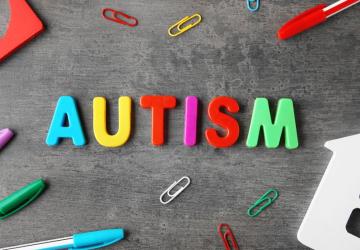Read about the link between stammering and autism.
Disfluencies in speech is common for people on the autistic spectrum. Autism affects the way people experience the world around them. It also affects the way they communicate.
Every person with autism is different. Some people may talk very little, while others may talk a lot and be very fluent. Some people may be very aware of their disfluencies. They may develop negative thoughts and feelings about their speech. Others may have little or no awareness that their speech patterns are disrupted.
The range of disfluencies can be quite broad, and includes features such as:
- Stammering, or stuttering as it's called in other parts of the world. This includes prolonging/stretching sounds, repeating sounds or words, or having silent blocks. Particularly at the beginning of words, but it can occur anywhere in a sentence. See our page What Is Stammering? for more information.
- The normal disfluencies present in everyone's speech, but at a higher rate than is typical. This includes 'um's and 'er's, hesitations, rephrasing and pauses.
- Less common disfluencies. This can include repeating sounds at the end of words, or repeating words at the end of a phrase or sentence. Or it could be inserting extra sounds in the middle of words.
How to help
Here are some tips for helping someone with autism who is stammering:
- Give them time to plan what they want to say.
- Say exactly what you mean. People with autism spectrum conditions can take things literally. Don't use slang, sarcasm or idioms such as "She's as cool as a cucumber" or "It went down to the wire". People will find these hard to understand.
- Eye contact can be very uncomfortable for some people with autism spectrum conditions. Don't be offended if the person doesn't make eye contact with you during a conversation.
Support & more information
The National Autistic Society has some useful tips for communicating with people who are autistic.
The NHS website has pages about autism.
What next?
- Become A STAMMA Member for free and join the community. We'll keep you updated with our activities.
- Get involved with the STAMMA community. Find an event, fundraise, share your story, volunteer, take part in research and more.
Donate & make a difference
Creating this page was only possible thanks to your kind donations.
Please consider making a donation to STAMMA: click here. You'll be helping us to:
- keep our support services running for people who stammer and worried parents
- put on workshops and support groups
- stage events to bring people together
- create guides for teachers and employers
- create our award-winning campaigns for change.
Thank you.
Our information
Find out How We Produce Our Information.
What did you think of this page? Give us your feedback, we'd love to hear from you.































